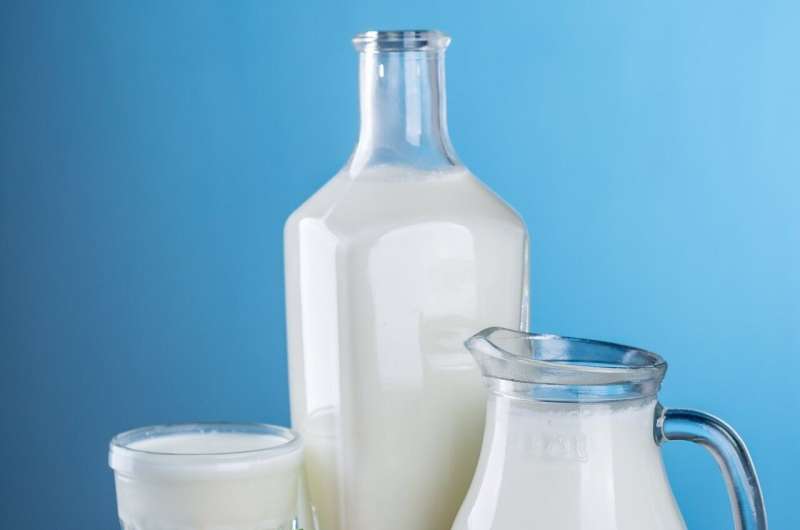Acidification kills H5N1 in waste milk, reducing risk of bird flu

Pasteurization is the only widely recognized method of killing H5N1, the virus that causes bird flu, in milk. However, pasteurization can be expensive and fewer than 50% of large dairy farms pasteurize waste milk.
Waste milk includes colostrum, the first milk after calving; milk from cows treated with antibiotics or other drugs; or any other factor that can make milk unsuitable and unsellable for human consumption. On farms, raw waste milk poses a potential risk of spreading avian flu, which so far has been confirmed in dairy cattle in 16 states.
University of California, Davis, researchers have found that acidification can kill H5N1 in waste milk, providing dairy farmers an affordable, easy-to-use alternative to pasteurization of waste milk. The Journal of Dairy Science published the .
"There can be a quite significant cost to have pasteurization as an option on the farm," said co-corresponding author and veterinary epidemiologist Richard Van Vleck Pereira, with the UC Davis School of Veterinary Medicine. "In our laboratory tests, we found that acidifying milk to a pH of 4.1 to 4.2 with citric acid effectively deactivates the virus."
The UC Davis research team will next conduct on-farm testing of milk acidification in waste milk containing H5N1. They will develop practical guidelines for farmers to implement acidification of waste milk as a protocol on the farm.
A sustainable solution
Pereira said citric acid is inexpensive. Acidified waste milk is also safe to be used to feed pre-weaned calves. The acidification process takes only six hours to fully kill the virus and doesn't require refrigeration, further reducing costs and increasing safety of farm workers handling milk.
Hobby farmers milking one or two cows or large commercial dairy farms could implement milk acidification without having to invest in large equipment.
"When we started this project, we were carefully thinking about not just deactivating the virus but developing a method that could be affordable, accessible and sustainable for farmers to use," he said.
Some U.S. dairy farms already practice milk acidification. Lowering milk pH to a level unsuitable for bacterial growth can kill bad bugs and prevent contamination without causing health issues in calves.
"We believe acidification is a novel and effective way to contain the spread of H5N1 on dairy farms and help protect livestock, pets and people," Periera said.
More information: Beate M. Crossley et al, In laboratory inactivation of H5N1 in raw whole milk through milk acidification: results from a pilot study, Journal of Dairy Science (2025).
Journal information: Journal of Dairy Science
Provided by UC Davis

















